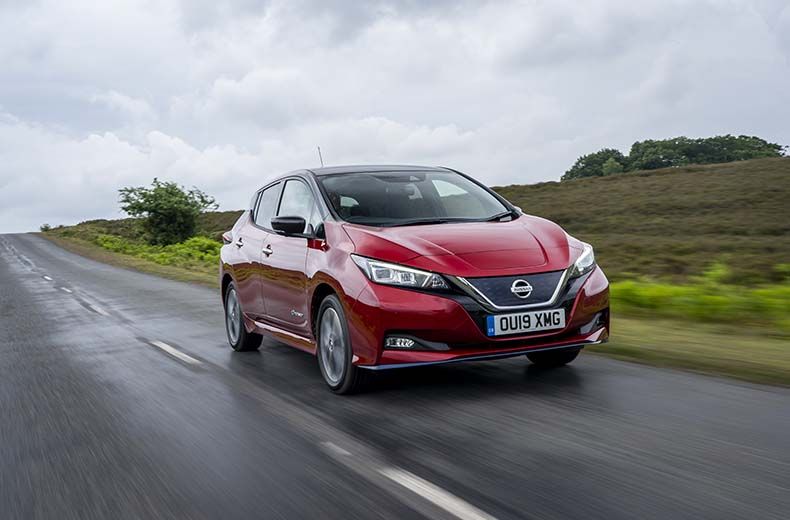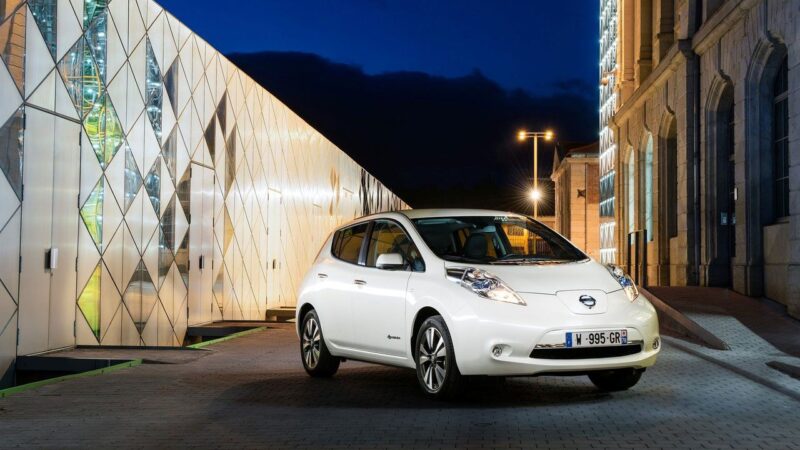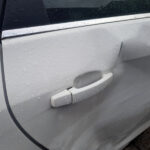The average driving distance of an EV on a full charge is about 211 miles. Vehicle range is determined by many factors, including battery size, vehicle weight, design, and fluctuating factors such as weather and temperature. It also depends on the type of your trip. In this article, we explain the concept of electric range, explore the different factors that determine how far an electric car can go, and how you can try to extend the electric range to maximize battery savings.
What Is Electric Range?
Electric range, EV range, or “range” is the estimated distance your electric or hybrid car can travel on a single charge.
In EVs, you’ll often find the remaining or estimated “mileage” displayed in the driver’s binnacle or other digital display as a percentage of miles/km remaining.
While manufacturers will quote a given range for any vehicle, the actual range can vary widely based on many factors, such as your driving and charging habits and ambient air temperature.
How Is Electric Range Calculated?
Electric vehicle mileage is not actually calculated under real driving conditions. Instead, like any good scientific experiment, it was conducted under clear and reproducible laboratory conditions. So how reliable is the data that manufacturers provide on their websites?
Once upon a time, MPG and electric range for both petrol and diesel vehicles were calculated using the NEDC (New European Driving Cycle). This is relatively inaccurate and has been superseded by the more accurate WLTP (World Harmonized Light Vehicle Test Procedure).
What manufacturers say about electric vehicle mileage may be more accurate now than it was 10 years ago, but you should be a healthy skeptic of any car that offers a single mileage figure.
What Factors Affect Vehicle Range?

Battery Life
The range is a measure relative to the battery’s capacity as new. Likewise, smartphone battery life decreases over time, and electric vehicle range decreases with age.
A study in the United States found that energy storage fell by an average of 2.3% per year. That means an EV with a range of 150 miles will lose 17 miles of usable range in five years. The rate of decline slowed in subsequent years.
Driving style and external factors
Most manufacturers are candid when it comes to claimed range estimates. Renault even provides a handy tool to assess the impact of speed, driving style, terrain, weather conditions, and the usage of heaters in the Zoe.
If the temperature drops below freezing, the range is further reduced. That’s why EV drivers find they can’t go that far in winter. In addition, people are increasingly relying on accessories such as blowers, heaters, and heated seats.
Battery size
As a basic rule of thumb, the larger the size of the battery (measured in kWh), the further you can go. It’s like having a bigger fuel tank. That said, bigger batteries mean extra weight, which is why smaller cars like the Honda e and Mini Electric have smaller batteries installed.
The range is and will always be a factor to consider when buying an electric vehicle, but there are many other factors to consider. Miles per kWh, price, and charging time are just three examples.
Electric Vehicle Efficiency
When it comes to buying a gasoline or diesel car, evaluating an electric car purely based on its range is a bit like using the size of the gas tank as a deciding factor.
Miles per kilowatt hour (miles per kilowatt-hour) is the electric vehicle equivalent of miles per gallon (mpg) and is used to measure the efficiency of an electric vehicle. The higher the number, the more efficient the car is. It may be displayed as kilowatt-hours per 100 miles (kWh/100 miles).
Other factors include :
- Tire pressure
- How well maintained the vehicle and battery health are kept overall
- Charging habits i.e. try to use lower voltage home chargers as part of your routine, as opposed to High voltage rapid public chargers
- Vehicles modes – some vehicles offer certain modes which sap more battery
- Use of internal features such as heaters, air con, radio, electric windows
- Aerodynamic lag – caused by windows being down, suspension settings, etc
What Is The Average Electric Range?
The average electric vehicle range is about 181 miles.
That might not sound like much, but we’ve definitely come a long way. Back in 2012, electric vehicles had an average range of 70-100 miles on a single charge.
How Many Miles Can an EV Drive on a Full Charge?
The average figure for how far you can go on a single charge is 250 miles, according to the UC Davis Center for Plug-In Hybrid and Electric Vehicle Research. Some models have less range, and some can go 350 miles or more.
Should You Drive an Electric Car to Empty?
You should definitely avoid draining your EV’s battery completely. Doing so will negatively affect the capacity of the battery and shorten its lifespan. The optimal charging range for an EV battery is usually between 20%-80%, so try to stay within that range.
Thankfully, many modern EVs sound an alarm when the battery is low. Some higher-end phones will even alert you when you’re near a charging station, so you can charge right away. You can usually see how many miles you have left before the battery runs out, so you can get a good charge before you get stuck.
Unlike gas cars, where you can sometimes drive miles away from the tank when the gas light is on, electric cars are driven at zero degrees. When this happens, you’ll be dragged to the charging station, so avoid letting the battery drain. Hydrating throughout the day or overnight at home can go a long way in eliminating this problem.
How To Maximize EV range?
You may not actually be able to increase the battery capacity of an EV, but there are a lot of things you can do to maximize the range of an EV.
Turn on Eco Mode
Eco Mode will help you make up those miles. This will slow down your acceleration and reduce the amount of power going to other systems like the air conditioner.
You may also want to turn off the heat because, unlike gasoline or diesel cars, electric cars don’t use the engine’s heat to heat the cabin. Instead, electricity from the battery is used to power a heat pump, which converts cold outside air into warm air inside the cabin.
Enable/Maximize Regenerative Braking
Most manufacturers allow you to choose the level of regenerative braking to apply each time you lift your foot off the pedal. This is to allow new EV owners to get used to the feel of braking without using the brake pedal.
If you drive around town a lot, you’ll want to choose the largest “regeneration” available to maximize your range.
Aero Wheels
Electric car makers try to differentiate their cars with some divisive retro-futuristic designs. However, it’s not just the body that is different.
Many manufacturers also recognize that with certain aerodynamic wheels, or even different tires, some significant range gains can be achieved. The Tesla Model 3 is equipped with Tesla’s Aero wheels and gets an extra 10 miles.
Keep the battery level between 20%-80%
If you want to maintain a longer maximum range, be sure to keep an eye on your battery. The best way is to keep the battery’s state of charge between 20%-80%.
Most EVs actually have a built-in buffer, so you can never really charge to 100%. This is to protect the battery. So even when using fast or ultra-fast EV charger types, EVs will be more sluggish after charging at 80%.
However, some EVs also allow you to pre-set charging limits so you never charge past a certain point. This will also make your EV more efficient, especially if you drive around town a lot, since when the EV battery is full, it won’t be able to take advantage of regenerative braking.
You can make your life easier by fueling the car overnight in your driveway. Check out RightCharge to compare prices for home EV chargers. This is an affiliate link, so if you buy a product through RightCharge, we’ll make money, but you won’t pay extra for using the link!…
Conclusion
The EV lineup remains one of the biggest questions people are thinking about transitioning to EVs. But new battery technology, larger batteries, and a rapidly expanding charging network mean that “range anxiety” should be a thing of the past for most EV owners.



